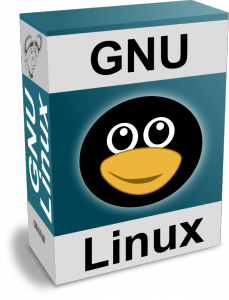 I launched raphaelhertzog.com this summer (taking over the English content of my former multi-lingual blog), when I decided that I would be more serious about blogging on Debian/Ubuntu related topics. On September, I decided to write 2 articles per week and up to now I managed to keep the schedule.
I launched raphaelhertzog.com this summer (taking over the English content of my former multi-lingual blog), when I decided that I would be more serious about blogging on Debian/Ubuntu related topics. On September, I decided to write 2 articles per week and up to now I managed to keep the schedule.
Two of my articles were published by Linux Weekly News, those are much more researched than the average blog article (they are tagged with [LWN] in the list below).
The most popular articles
Most people read my blog through the RSS feed which happens to be syndicated on Planet Debian and Planet Ubuntu. According to the feedburner’s statistics, the top-5 articles are:
- 5 reasons why I still contribute to Debian after 12 years (32700 views)
- [LWN] Understanding Membership Structures in Debian and Ubuntu (31700 views)
- Social Micropayment Can Foster Free Software, Discover Flattr (30100 views)
- Everything you need to know about conffiles: configuration files managed by dpkg (29900 views)
- How to make 110.28 EUR in one month with free software and Flattr (29400 views)
But I also have occasional readers visiting my blog because my articles are announced on Identi.ca, Twitter and Facebook (and they circulate on social networks, thanks to those who are sharing them!). The top-5 articles according to the statistics of my website are:
- 5 reasons why I still contribute to Debian after 12 years (6000 views)
- [LWN] Can Debian offer a Constantly Usable Testing distribution? (5000 views)
- Understanding Debian’s release process (1500 views)
- Flattr FOSS (1400 views, not an article but I regularly blog about this project)
- Can Debian achieve world domination without being on Facebook? (1100 views)
The most flattered
Since I am using Flattr on my blog, it can be interesting to see the articles which generated lots of flattr micro-donations. The top-3 articles are my articles about Flattr (1, 2, 3). Excluding articles related to Flattr, the top-5 is:
- 5 reasons why I still contribute to Debian after 12 years (12 flattr)
- The secret plan behind the “3.0 (quilt)” Debian source package format (10 flattr)
- How to use multiple upstream tarballs in Debian source packages? (5 flattr)
- [LWN] Understanding Membership Structures in Debian and Ubuntu (4 flattr)
- Do You Want a Free Debian Book? Read on. (4 flattr)
Most articles get 2 to 3 flattr clicks.
The most commented
I usually get 4-5 comments on most articles but some generate much more feedback:
- [LWN] Can Debian offer a Constantly Usable Testing distribution? (40 comments)
- 5 reasons why I still contribute to Debian after 12 years (22 comments)
- Can Debian achieve world domination without being on Facebook? (15 comments)
- How to generate different dependencies on Debian and Ubuntu with a common source package (14 comments)
- [LWN] Understanding Membership Structures in Debian and Ubuntu (12 comments)
Factoids
Here are my conclusions based on the above figures:
- Writing about your Debian/Ubuntu work and your long term involvement makes for highly popular content that spreads well.
- In-depth and well researched articles (like those written for LWN) do not generate more flattr revenues than the average article even if they take 4 to 8 times as long to write.
- People are more likely to flattr you for your free software contribution than for the value they get out of your article.
- People care a lot about the Debian release process, and like to discuss the topic.
If you also appreciate the above-linked articles, you should click here to subscribe to my email newsletter.
 Currently, the main product of the Debian project is its stable release
Currently, the main product of the Debian project is its stable release If you’re using Debian, you know that this distribution is built entirely by volunteers that form a very diverse community. And you could be part of it. But why should you do that? I can’t tell for you but I can share my own experience. It’s been 12 years since I joined Debian and I’m going to tell you what keeps me on board.
If you’re using Debian, you know that this distribution is built entirely by volunteers that form a very diverse community. And you could be part of it. But why should you do that? I can’t tell for you but I can share my own experience. It’s been 12 years since I joined Debian and I’m going to tell you what keeps me on board.